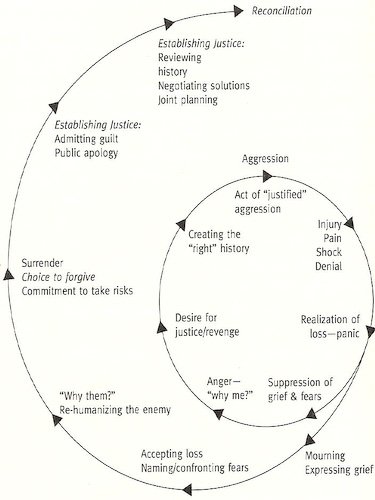The Journey Within: A Guide to Healing Trauma through Understanding and Inner Work
When it comes to healing trauma, there is no one-size-fits-all approach. Each person’s journey will be unique, guided by their soul and life experiences. However, there are common themes and tools that can help peel back the layers and gain clarity. This extensive guide explores various methods for examining trauma from different angles to find understanding and let go.
Moving Beyond Symptoms to Causes
Healing trauma requires looking beyond surface-level symptoms to address underlying causes. Take time to reflect on each trauma, examining it from your own perspective as well as that of others involved. Consider the circumstances surrounding each event, your emotional state and vulnerabilities at the time, as well as motivations and wounds of those who hurt you. This deeper exploration allows you to gain perspective and identify patterns to avoid in the future.

Journaling for Insight
Journaling is a powerful way to process emotions and gain perspective. Write about each trauma, detailing everything you can remember without judgment. Revisit entries over time and note any new realizations or questions that arise. Your journal becomes a record of your inner journey. Ask questions like “How did this event shape who I am today?” and “What can I learn from this experience?” Let your pen flow without censoring thoughts, then return with an open mind to gain insight.
Meditation for Connection
Learning to quiet the thinking mind through meditation strengthens your connection to intuition and guidance. Make time daily to sit quietly, focusing on your breath or a mantra. This regular practice builds concentration and the ability to access what lies below surface thoughts. In meditation, ask for understanding of your trauma. Listen with an open heart; answers may come through intuitive flashes, emotions, or inspirations after your sit. A connected practice enhances all other healing methods.
Peer and Professional Perspectives
Reading others’ journey and consulting professionals provides objective viewpoints to consider. Seek out autobiographical books and recovery communities about people who endured similar traumas. Their experiences offer mirrors to reflect your own path. A compassionate therapist can also help uncover deeper layers through discussion. They bring expertise while you retain agency over your truth. Integrating diverse perspectives challenges engrained beliefs and speeds healing.
Releasing through Creative Expression
Creativity allows buried emotions safe expression and release. Try journaling with colored pens, drawing your feelings, sculpting from clay, dancing to feel the trauma dissolve from your body. Music therapy, singing, and playing an instrument connect you to emotions in a healing way. Through creative acts, pains resurface in symbolic form where you can observe and let go of their grip. This process brings relief and reveals new understanding each time you engage.
Embracing Spiritual Support
Those on a spiritual path have abundance of help available beyond the physical realm. Make consistent prayer, ritual, or energy work part of your healing routine. Speak to spirit guides, angels, ascended masters, and your higher self for compassion and perspective beyond this life. Some find comfort through past-life regressions with a qualified therapist as well. Truly surrendering to guidance reveals core lessons and affirms you are never alone in challenging times. Your soul already knows the way; spiritual practices strengthen that inner voice.
Over time, integrating various self-reflective methods provides a well-rounded approach to move through trauma. There will likely be breakthroughs as well as setbacks, so cultivate self-patience, self-care and life balance during this inner journey. The willingness to face pain with courage and understanding is the greatest healing act. Stay true to what resonates for you as your soul’s inherent wisdom emerges through this deep inward exploration.
